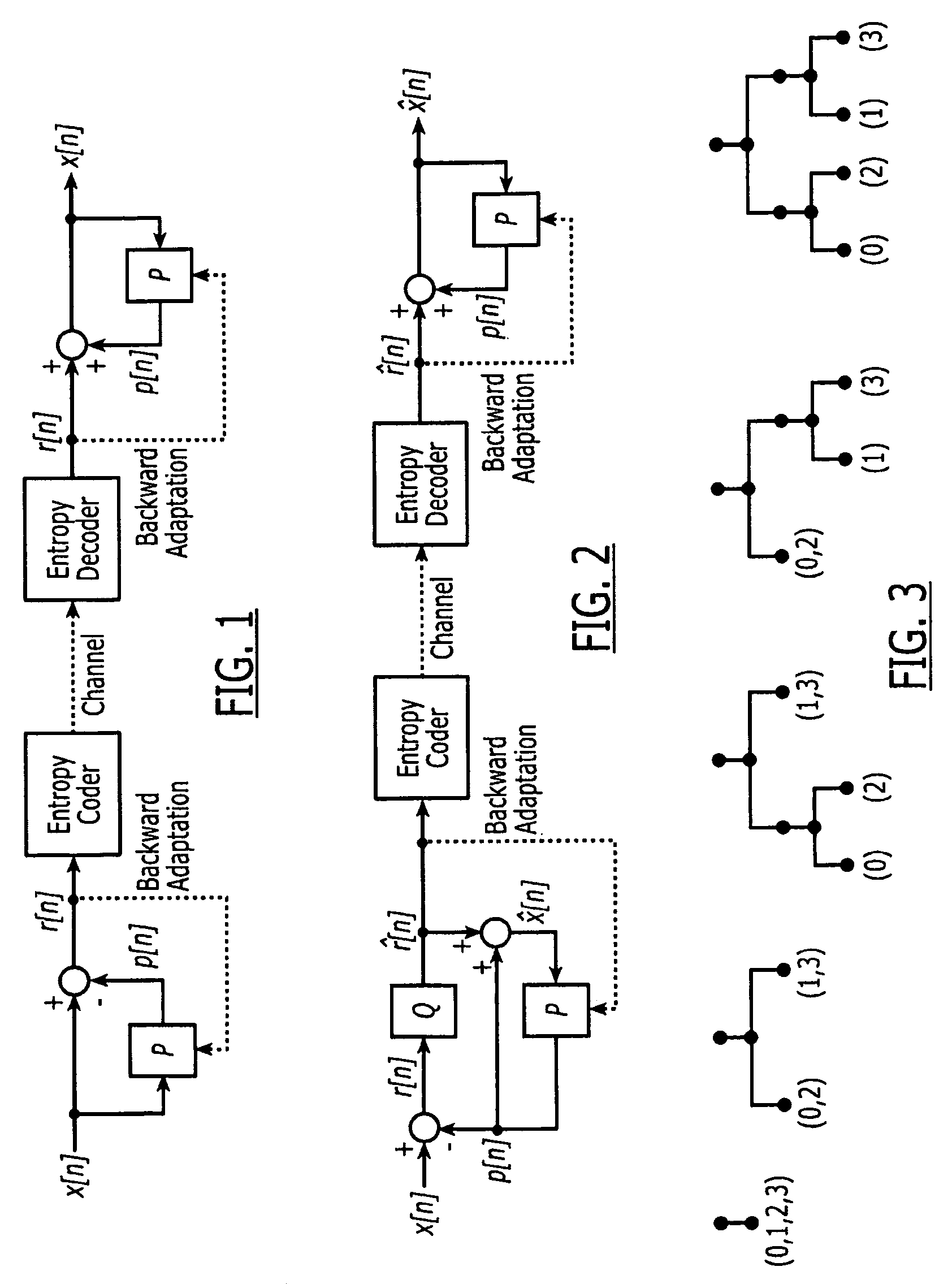Method and computer program product for compressing time-multiplexed data and for estimating a frame structure of time-multiplexed data
a time-multiplexed data and frame structure technology, applied in the field of processing time-multiplexed data, can solve the problems of lossy compression and increase the compression at the cost of distortion in the reconstructed signal, and achieve the effects of minimizing the expected bit rate, minimizing the entropy summed over the leaf nodes, and reducing the ra
- Summary
- Abstract
- Description
- Claims
- Application Information
AI Technical Summary
Benefits of technology
Problems solved by technology
Method used
Image
Examples
Embodiment Construction
[0019]The present inventions now will be described more fully hereinafter with reference to the accompanying drawings, in which some, but not all embodiments of the inventions are shown. Indeed, these inventions may be embodied in many different forms and should not be construed as limited to the embodiments set forth herein; rather, these embodiments are provided so that this disclosure will satisfy applicable legal requirements. Like numbers refer to like elements throughout.
[0020]According to one embodiment, a method, apparatus and computer program product are therefore provided for discovering or otherwise determining the frame structure of time multiplexed data without knowledge or any indication of the frame structure being provided. In some instances, the minimum and maximum sample rates are provided, as well as a data constraint that may be relaxed that all of the sample rates are powers of 2, but the frame sequence itself need not be provided to the method, apparatus and co...
PUM
 Login to View More
Login to View More Abstract
Description
Claims
Application Information
 Login to View More
Login to View More - R&D
- Intellectual Property
- Life Sciences
- Materials
- Tech Scout
- Unparalleled Data Quality
- Higher Quality Content
- 60% Fewer Hallucinations
Browse by: Latest US Patents, China's latest patents, Technical Efficacy Thesaurus, Application Domain, Technology Topic, Popular Technical Reports.
© 2025 PatSnap. All rights reserved.Legal|Privacy policy|Modern Slavery Act Transparency Statement|Sitemap|About US| Contact US: help@patsnap.com



